 I’ve noted here and elsewhere that I will include recipes even when they go wrong so as not to give the impression that I am some expert (so not true) and never have a failed bread.
I’ve noted here and elsewhere that I will include recipes even when they go wrong so as not to give the impression that I am some expert (so not true) and never have a failed bread.
This would be one of those times when something goes wrong.
 Oh, this is MellowBakers.com’ 19th bread from Hamelman’s book “[easyazon-link asin=”1118132718”]Bread: A Baker’s Book of Techniques and Recipes[/easyazon-link]”. For those who didn’t know, we’re a bunch of crazy breadheads who decided to do all 84 recipes in the book but in a casual, relaxed, dare I say “mellow” fashion. If you’re a bit bread crazy too, join us, jump in at any point and play along. Or just read up on our adventures, lots of talk, lots of photos and links to members’ great blogs too.
Oh, this is MellowBakers.com’ 19th bread from Hamelman’s book “[easyazon-link asin=”1118132718”]Bread: A Baker’s Book of Techniques and Recipes[/easyazon-link]”. For those who didn’t know, we’re a bunch of crazy breadheads who decided to do all 84 recipes in the book but in a casual, relaxed, dare I say “mellow” fashion. If you’re a bit bread crazy too, join us, jump in at any point and play along. Or just read up on our adventures, lots of talk, lots of photos and links to members’ great blogs too.
Now I’ve done this bread or at least a couple of recipes very close to this bread before and they came out very nicely. The very similar 40% Rye with Caraway based on the Back Home Bakery recipe, for example. This came out so nicely, I’m using photos of that bake as the main graphic for the site.
That looks like I know what I’m doing, doesn’t it?
Let’s put that theory to the test, shall we?
We start this bread with an overnight build of rye sourdough. 363g rye flour, 300g water and 17g starter. Aside from the very green tone to that first photo, you can see this is pretty hefty paste. We let that sit 14 hours. Next day the sourdough has expanded and even receded.
This may be the start of trouble. It’s very possible the enzymes active in this now well past it’s prime sourdough will be a problem.
A wise person might have stopped here and begun again before getting too much further. That, as you’ll see, isn’t me.
Forging ahead regardless, I collect the ingredients and begin making the dough.We add water, bread flour (we want the extra gluten since rye is not too high in that department), caraway (yum) salt and yeast.
Mix everything together in one shot. Three minutes with the flat beater and… hmmmmm. This is looking bad. At this point I wondered if I accidentally added too much water, it shouldn’t look like batter. Switch to the dough hook, maybe developing the gluten a little will help. Nope.
I checked the photos of the mis and confirmed the water wasn’t the issue. that leaves the overactive sourdough as the culprit.
Well, I could chuck it out and start again or just forge ahead bravely and see what we get. I choose the latter.
I pour (literally) the dough into the bulk proofing bowl and an hour later it’s gone and doubled. Still soft as all get out. Time to turn it out and shape.
Ha! Shape? This blob? No way. I worked in another 80 grams of flour until it was slightly more handelable and I could coax it into a loaf shape then I floured my banetons.
Set aside for 50 minutes, the dough proofed fine although still extremely soft.
Getting it out of the baskets proved to be a challenge. They did not, of course, keep their shape very much. Both stuck to the basket but one was adamant it didn’t want to get baked. It lost the battle and has the scars to show for it.
They still baked up not too badly but there wasn’t much oven spring to them at all.
Verging towards biscotti shape, the crumb came out pretty well, considering the lack of gluten and how sloppy the dough was, even after adding extra flour. Still. I can fit two of these short slices into one toaster slot so all is not lost here.
Th flavour is really good despite the visuals. There’s a fairly distinct “tang” to this bread which I presume is due to the excessive sourdough activity right at the start. But I quite like it.
And just for good measure another shot of the loaves cut in half; three will go into the freezer for later consumption. I’m off to the store to by me some pastrami.
Other people have had MUCH better success with this loaf; check out the other Mellow Bakers who produced great looking 40% Rye breads here.
I’ll be doing this one again. Hopefully, the kitchen won’t be so warm and the overnight sourdough not become excessively active.
This bread MAY be getting YeastSpotted.
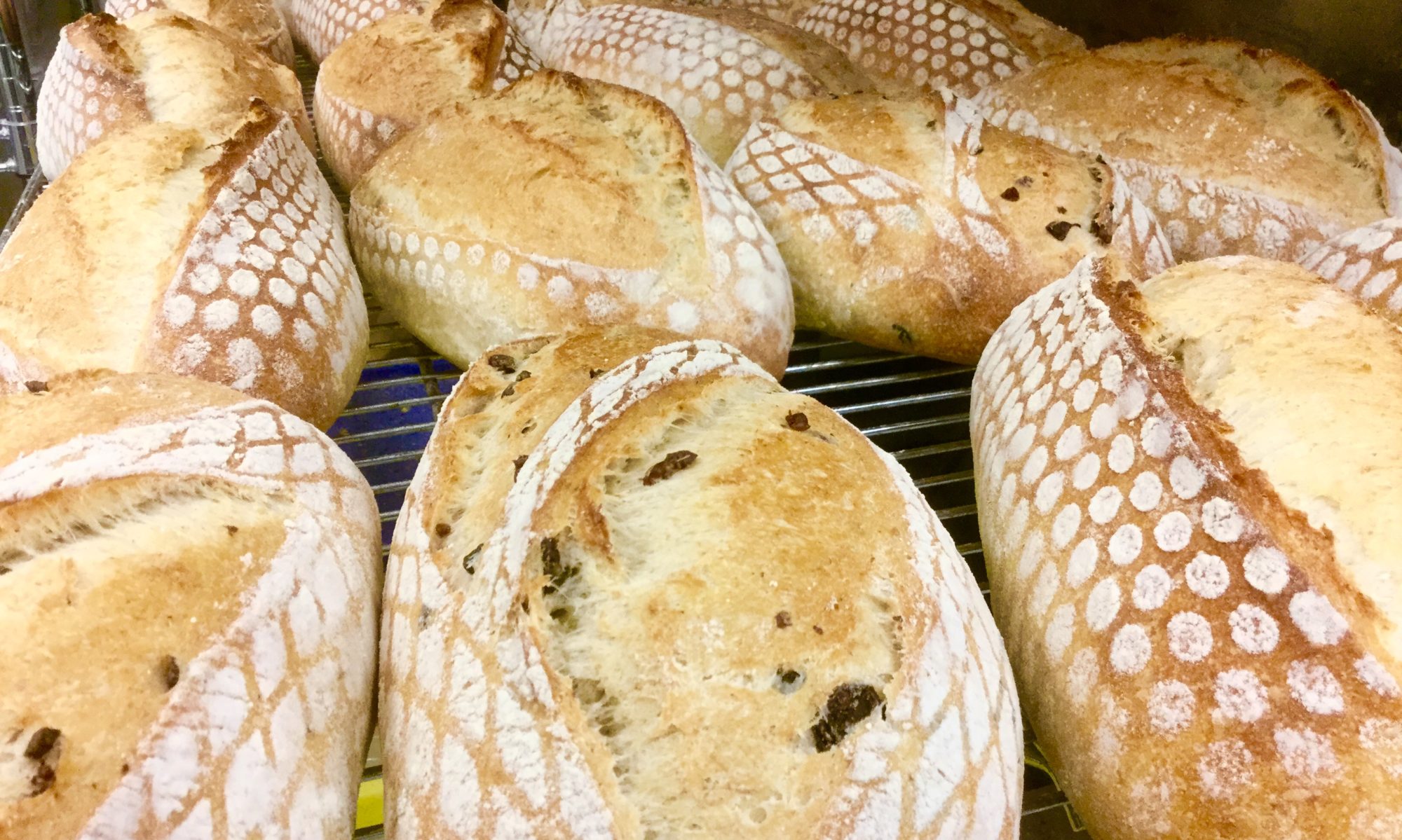

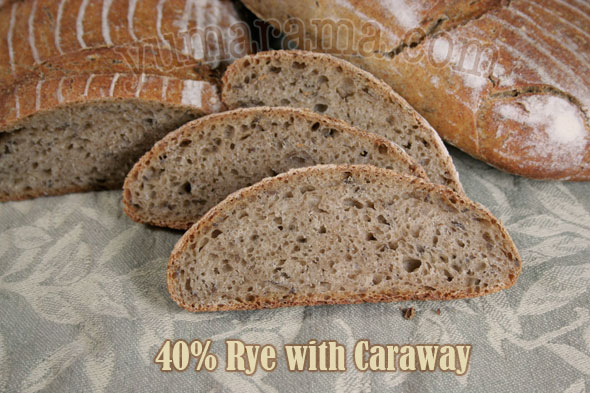
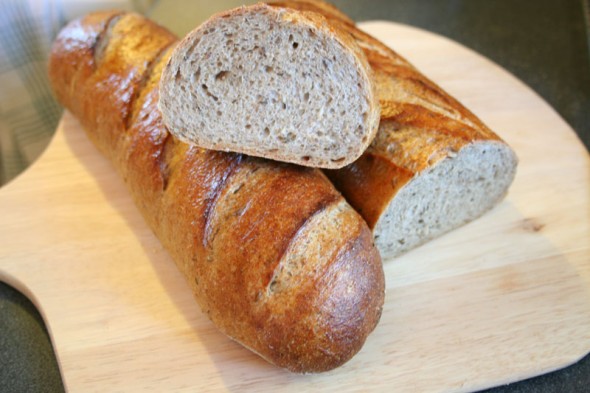
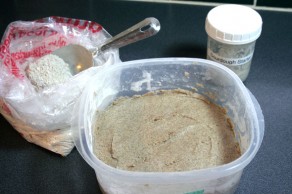
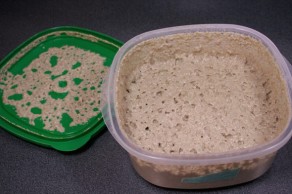
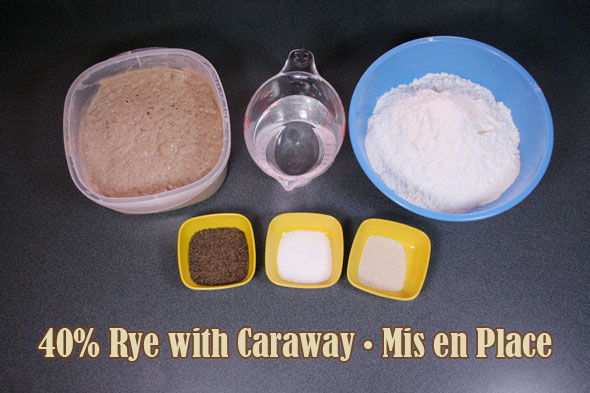
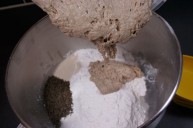
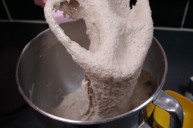
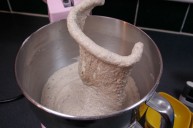
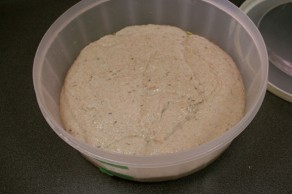
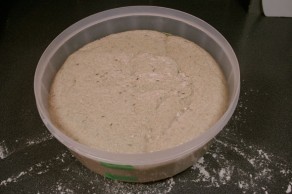
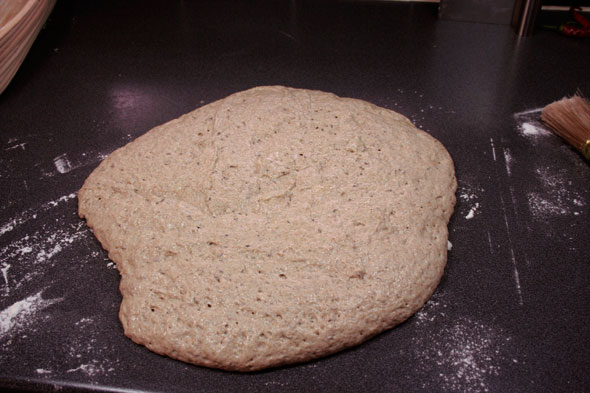
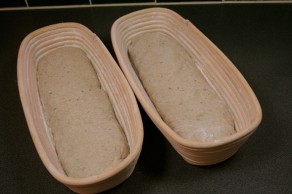
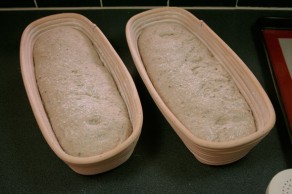
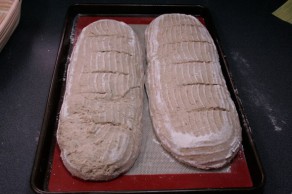
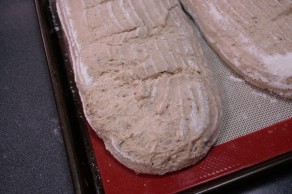
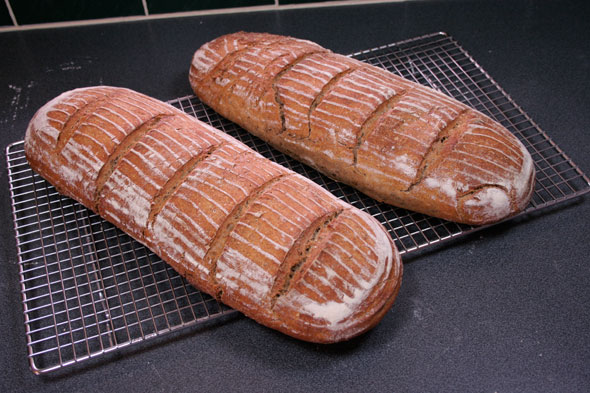
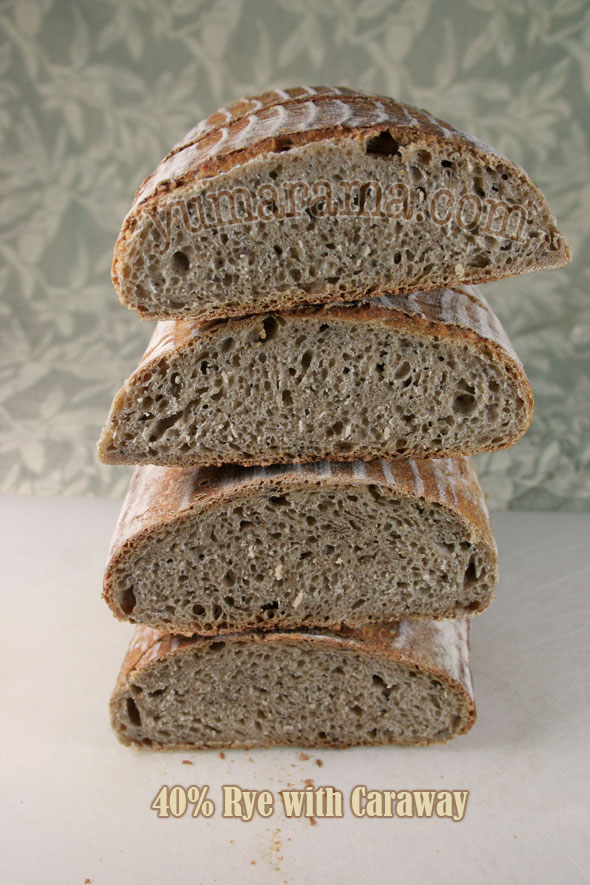
Shit happens, sometimes ,-)
Could be the starter, the summer temperatures maybe? How warm is your kitchen/starter home.? I have thought about this quite a bit and one of the things that books rarely advise on is what is the air temperature when they bake, leave starters out etc and they don’t advise on how to adjust times for sourdough proving in particular. They talk about dough temperature, but most of us don’t have home proving chambers Given that the temperature in my kitchen can vary from say 15 – 28 degrees during the year, that’s a big difference. What else? – it is interesting that you had suspicions from the start, which says that you are pretty expert really 🙂 Did you use a high gluten flour or add extra gluten? It looks well aerated and beautifully cooked regardless, no doughy corners or heaviness at the bottom of the loaf, which is what happens to me a bit too often, if I’m being honest. Great post!
Ulrike:
Yes indeed it does! Good summarization! 😆
Joanna:
The kitchen – the house, actually – was quite warm that particular night, likely in the mid to high 20’s. I expect that’s really the culprit. It then caused the starter to be hyperactive, chewing through the rye flour completely long before it’s “14-16 hours” was done.
I should probably have stopped right the next day when I opened the container and saw the very deflated starter and saved myself the trouble, just start over and not mix this in with the rest of the ingredients.
But I forged ahead anyway, quite aware there was a very good chance things would not go as expected and lo and behold, that’s just what happened.
An interesting ‘experiment’ anyway. I’ve made this bread a few times before so I know there’s nothing wrong with the recipe. I think that was, in large part, why I went ahead even after opening the container and seeing the starter, which was at the top of the bowl and touching the cover, completely deflate to the low level we see above. I basically thought “Let’s see what happens anyway”. The bread was still tasty, just funny shaped.
And yes, I did use a little Vital Wheat Gluten in this.
Paul, I feel your pain…. you are a brave guy, and you know what? I would have probably gone ahead too, but then would be soooo p!ssed off that no blog would come out of it… which is silly
It’s good to know everyone makes boo-boos in the kitchen sometimes –
I look forward to your next post!
Hi Paul. Still, beautiful baking!
Hi, Paul.
As you saw, my loaves were really flat, too. I don’t think my starter was overproofed, though; it definitely wasn’t starting to recede.
I didn’t add any vital wheat gluten (but used bread flour) – maybe that was part of my problem?
Also, it was a very wet dough, and I was actually worried that it had overproofed in the banneton, so then when I tipped it out onto my “peel” (aka sheet pan), it seemed to flatten out a bunch. Could that have done it?
Either way, a yummy bread!
Gee, I dunno, I think I made the loaves before with just bread flour and rye without it going all funky.
I say we chalk it up to “bad planetary positions” and just do a new batch!
Things happen, due to a time management problem I had a sponge out for too long, the bread developed surprisingly well, and I noticed the “tang” you talked about a lot. Also very airy structure. A very sour bread, which was fun with cold cuts for a change, I think once the sponge starts to recede again, the window of opportunity is lost..
Happy to hear you liked the outcome!
Keep at it and remember: Even when it fails, you can EAT THE EVIDENCE*
(*usually, anyway)